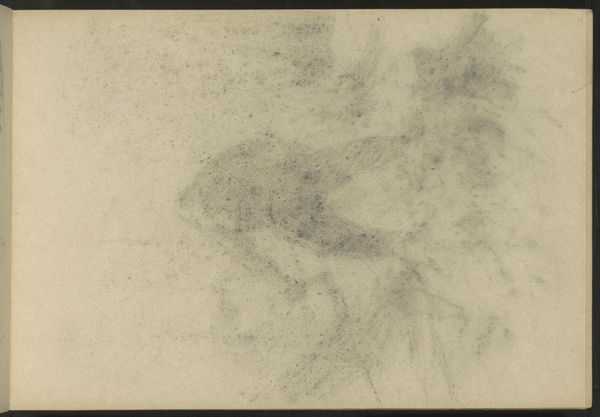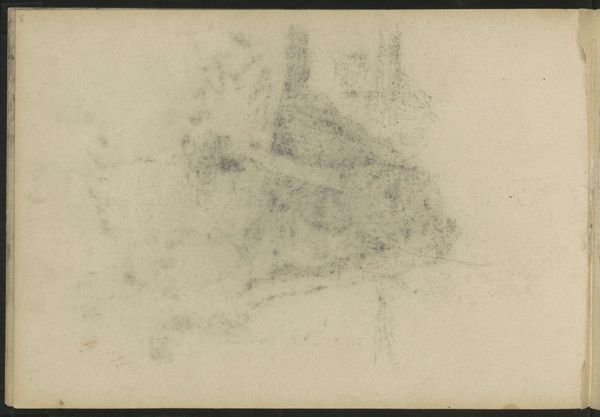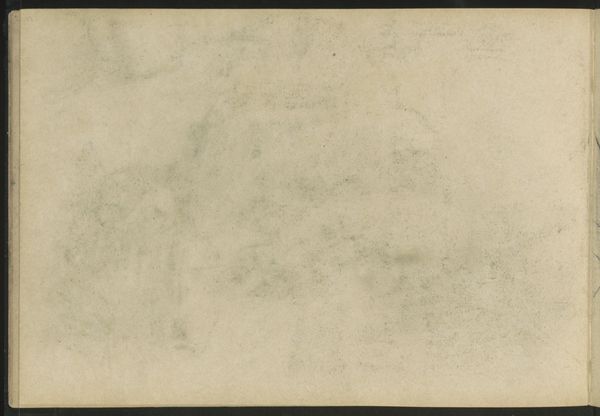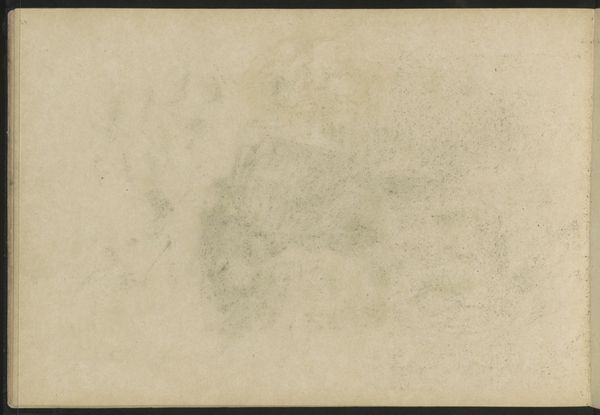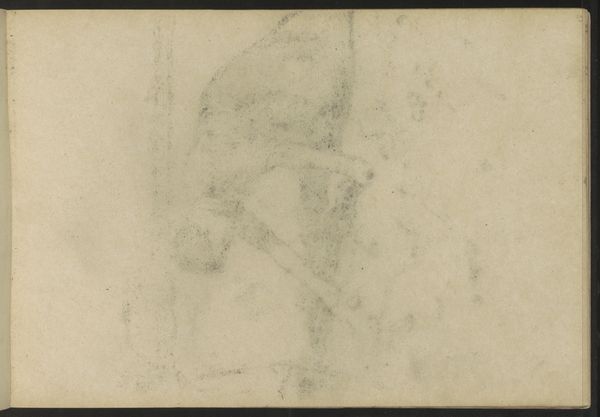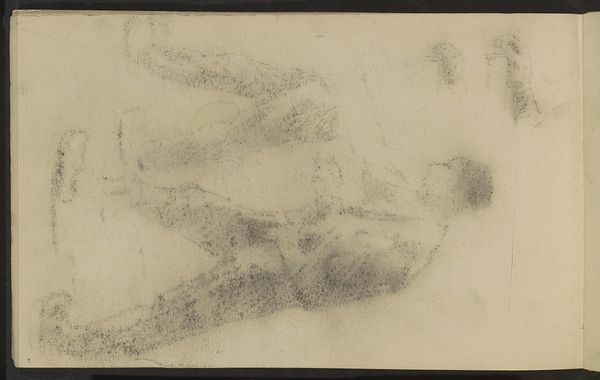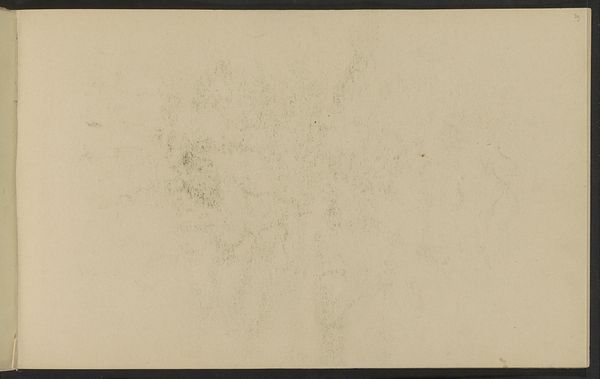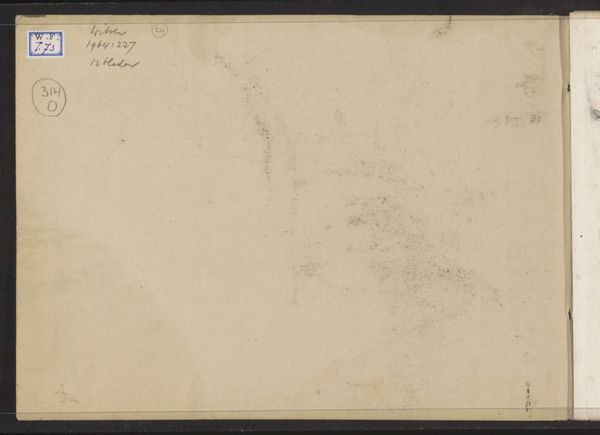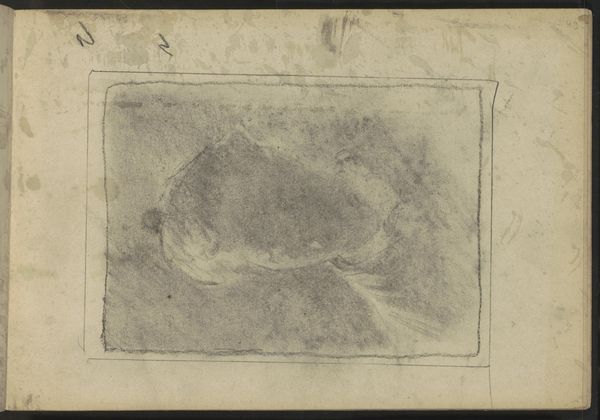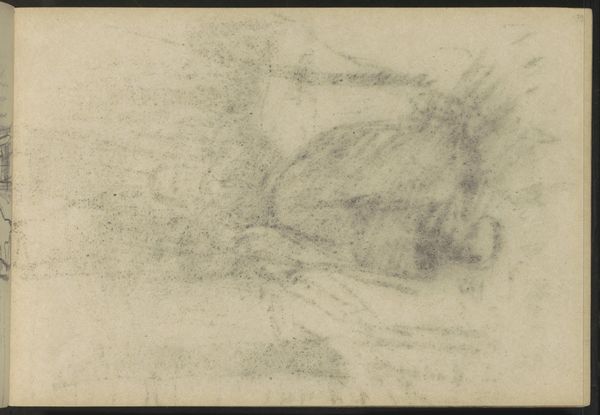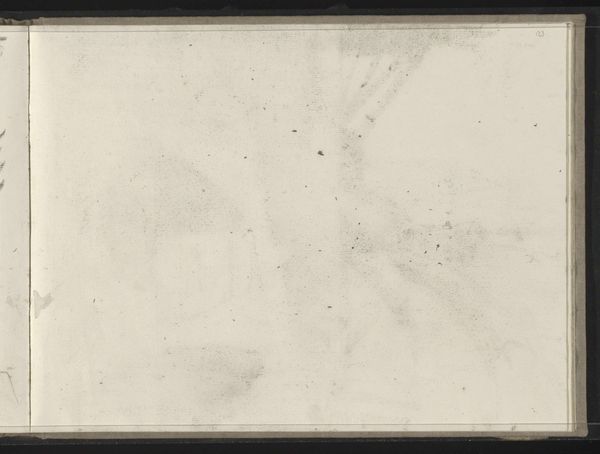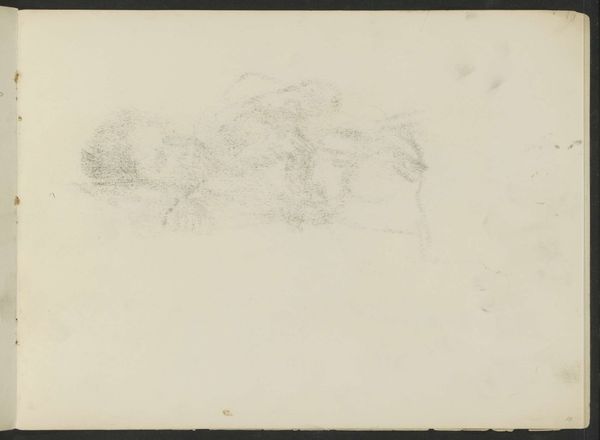
Copyright: Rijks Museum: Open Domain
Curator: Willem Witsen's graphite drawing, "Abklatsch van de krijttekening op pagina 3", dating from approximately 1884 to 1887, strikes me as profoundly melancholic. The image itself appears spectral. What do you see? Editor: I see what you mean. The softness of the graphite on the paper definitely gives it a hazy, dreamlike quality. It is quite minimal. The Romanticist style, in my view, speaks to themes of transience and the human condition, inviting a reading centered on the ephemeral nature of experience. How do the historical contexts shape your interpretation? Curator: For me, it is crucial to place this piece within the societal context of the late 19th century, an era grappling with rapid industrialization and social upheaval. Witsen, as a member of the Dutch impressionist movement, actively sought to capture fleeting moments, the emotional states of urban life amid vast changes. This drawing on page three from an album might be seen as a subtle critique of modernization and alienation through its introspective nature. Editor: That’s interesting! When we consider the rise of the Rijksmuseum as an institution solidifying Dutch identity, Witsen’s piece performs, simultaneously, as a marker of belonging and quiet resistance. I see this subdued style, these faint renderings of figures and landscapes, as a challenge to the grandiose national narratives propagated by official artistic circles. Curator: Exactly, it goes against the grain! Witsen isn't presenting some grand historical tableau but capturing the internal. Considering feminist theory, what do you make of the near-absence of discernible figures? Are these portraits intentionally rendered ambiguous, almost erased, reflecting women's muted place within artistic circles? Editor: Absolutely, that reading is persuasive. Furthermore, if we examine the art market dynamics of that time, drawings like these—often more intimate and personal than large oil paintings—represented an alternative space for artists to bypass traditional channels of recognition. This is the artist working outside of the traditional norms of public display. Curator: Thank you. Considering our dialogue today, I see the artwork as reflecting larger anxieties present in the historical setting in which the artwork was produced. Editor: And I would stress how such art provided not just personal expression, but resistance to national identity being created in this time.
Comments
No comments
Be the first to comment and join the conversation on the ultimate creative platform.
